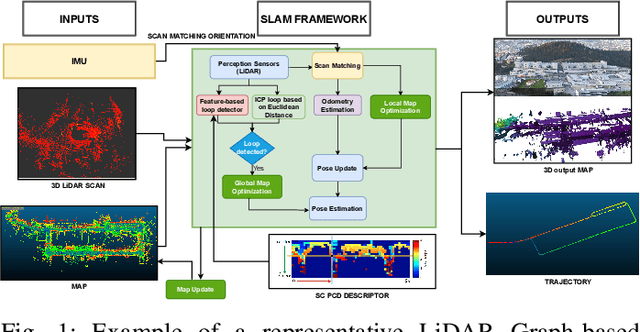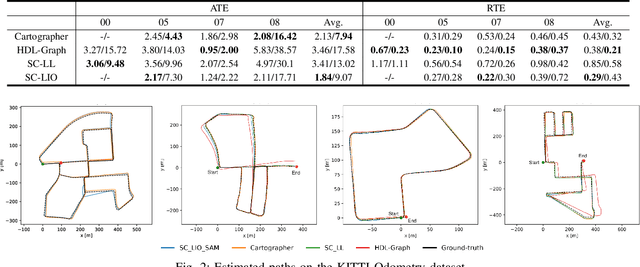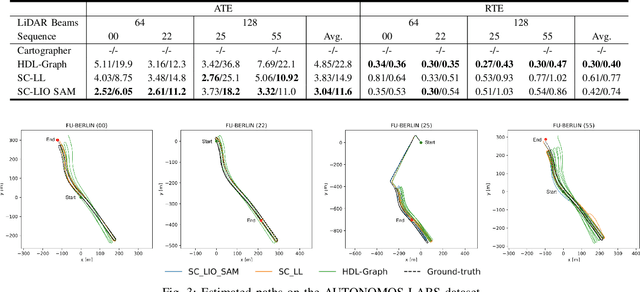Impact of 3D LiDAR Resolution in Graph-based SLAM Approaches: A Comparative Study
Paper and Code
Oct 22, 2024



Simultaneous Localization and Mapping (SLAM) is a key component of autonomous systems operating in environments that require a consistent map for reliable localization. SLAM has been a widely studied topic for decades with most of the solutions being camera or LiDAR based. Early LiDAR-based approaches primarily relied on 2D data, whereas more recent frameworks use 3D data. In this work, we survey recent 3D LiDAR-based Graph-SLAM methods in urban environments, aiming to compare their strengths, weaknesses, and limitations. Additionally, we evaluate their robustness regarding the LiDAR resolution namely 64 $vs$ 128 channels. Regarding SLAM methods, we evaluate SC-LeGO-LOAM, SC-LIO-SAM, Cartographer, and HDL-Graph on real-world urban environments using the KITTI odometry dataset (a LiDAR with 64-channels only) and a new dataset (AUTONOMOS-LABS). The latter dataset, collected using instrumented vehicles driving in Berlin suburban area, comprises both 64 and 128 LiDARs. The experimental results are reported in terms of quantitative `metrics' and complemented by qualitative maps.
 Add to Chrome
Add to Chrome Add to Firefox
Add to Firefox Add to Edge
Add to Edge